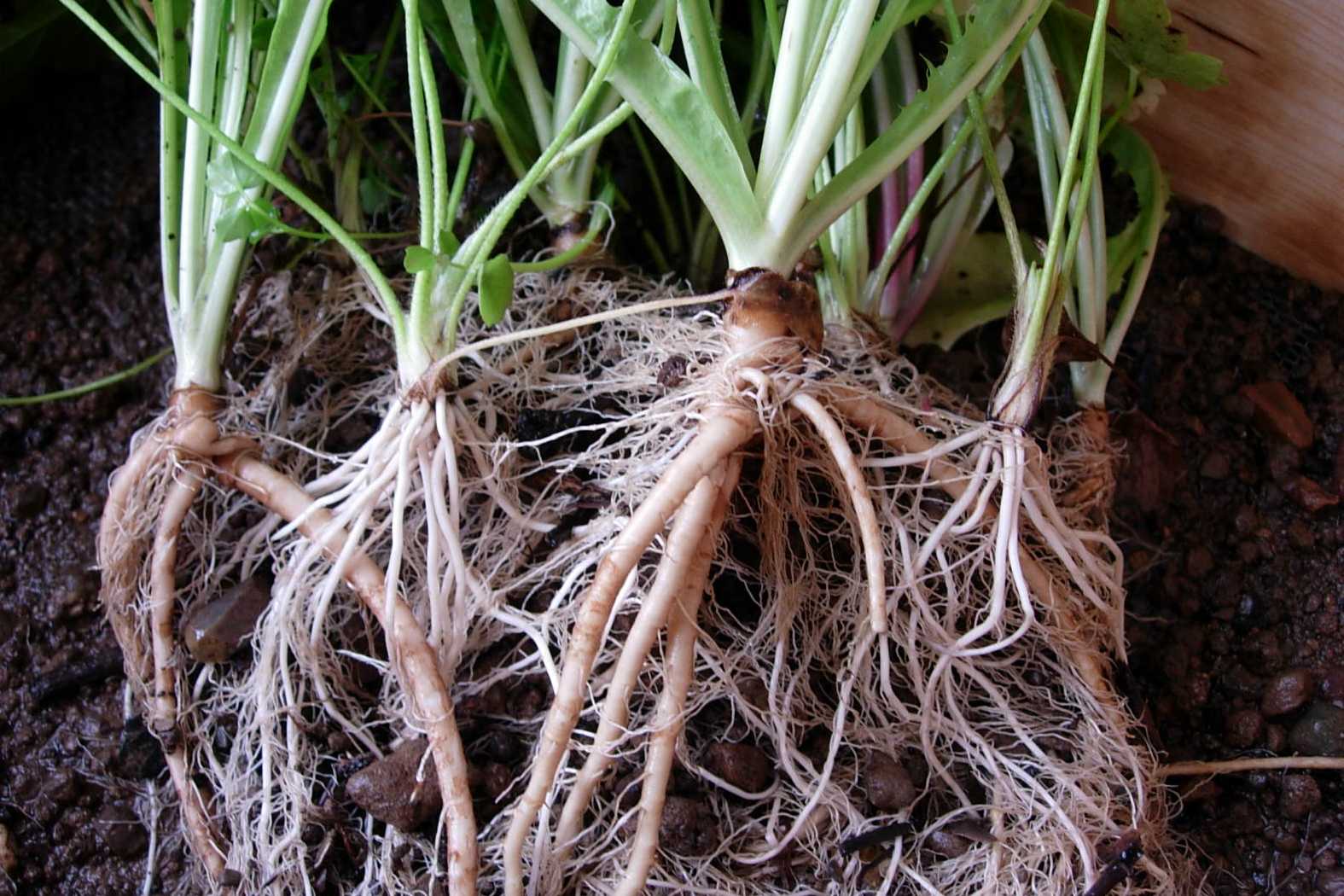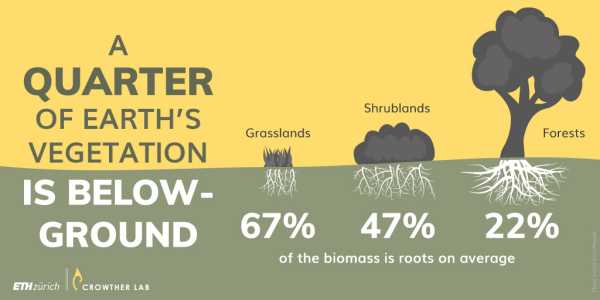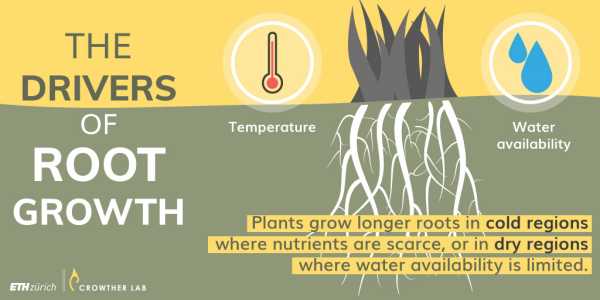Nearly 25% of the world’s plant biomass is underground
- D-USYS
- Institute of Integrative Biology
Until now, there has been only limited understanding of exactly how much of the world’s biomass is below ground. As a result, it has also been unclear how much carbon is being stored underground by plants.

Researchers at external page ETH Zurich’s Crowther Lab studied multiple environments—forests, shrublands, and grasslands—across the globe to model the ratio of below-ground biomass to above-ground biomass. The new study, published in the journal Nature Ecology & Evolution, is the first globally continuous model of root-to-shoot ratios, and suggests that almost a quarter of global plant carbon exists below our feet in the form of roots.
Implications for climate change
The role of underground plant ecosystems has implications for understanding climate change. “First, knowing the percentage of carbon stored below-ground is a big step,” said Haozhi Ma, the study’s lead author. “Second, understanding how the root-to-shoot ratio changes because of environmental variation is important for our understanding of carbon cycling and carbon storage.”
Mapping carbon biomass from space
With this study’s new predictive model, scientists can now estimate the total amount of carbon contained in a plant, from studying the above-ground component. For instance, NASA and the European Space Agency, which are using satellites to map above-ground forests, can use this data to estimate total carbon storage. “Quantifying both above and below-ground carbon pools is of utmost importance toward improved land management for climate mitigation, but mapping these components at a global scale remains a huge challenge,” said Dr. Laura Duncanson, a researcher at the University of Maryland who works with NASA to study global biomass. “NASA is currently producing 3D above-ground carbon maps, but we cannot see below-ground carbon from space. This paper develops predictive models to estimate this challenging underground carbon pool and reaffirms the importance of below-ground biomass in the global carbon cycle,” said Duncanson.
Roots to shoot ratio
Crowther Lab researchers found proportionally larger root systems in cold and dry ecosystems where soil nutrients are scarce. In warm, wet areas, however, ample soil nutrients mean plants put more energy into competing for light. In that case, most plant growth is above-ground, so the roots are proportionally smaller. The study estimates that roots make up 22% of total forest biomass, 47% of total shrubland biomass, and 67% of total grassland biomass. Globally, the below-ground portion of plants is 24%, meaning nearly a quarter of the carbon stored by plants world-wide is underground.
Based at ETH Zurich, the Swiss Federal Institute of Technology in Zurich, Crowther Lab is an interdisciplinary group of scientists studying global ecosystems and generating knowledge to protect biodiversity and address climate change.
Reference
Ma H, Mo L, Crowther TW et al: The global distribution and environmental drivers of aboveground versus belowground plant biomass, 2021, Nat Ecol Evol. Doi: external page 10.1038/s41559-021-01485-1

